Reflections on Dreamforce 2023: Omni-Channel is No Longer Optional
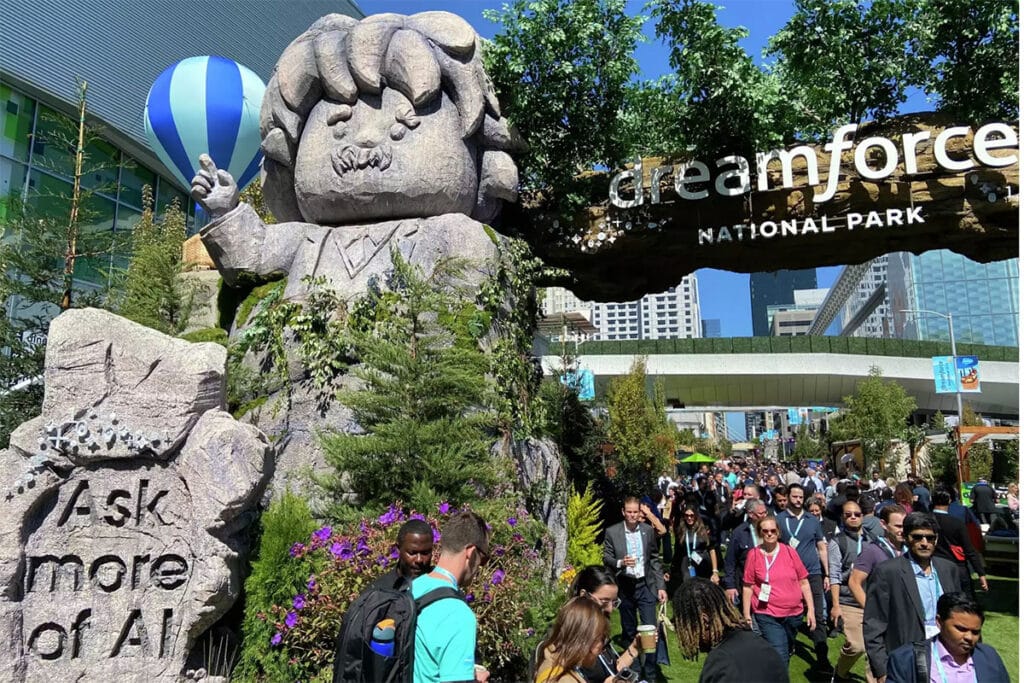
It’s hard to believe that Dreamforce 2023 was already a month ago. But one thing is for sure: the impact of this year’s amazing event is sure to stick with us for a long time.
1440 at Dreamforce
Here at 1440, we’re big fans of Dreamforce. We’ve attended Salesforce’s signature event for years now in multiple capacities – as attendees, sponsors, speakers, and exhibitors. And it truly gets better every year.
At Dreamforce 2023, we hosted a hospitality suite at the Ritz Carlton. It was such a great opportunity to connect with old friends and meet new ones. Visitors also got the chance to see firsthand how our suite of solutions can help brands deliver connected experiences throughout the customer journey.
We also co-hosted a Happy Hour at Lucky Strike with some of our awesome partners: TransPerfect, Red Van Workshop, and Bazaarvoice. It was a fun way to connect with some amazing brands.
Finally, 1440 was represented in Salesforce’s Bring Your Own Messaging Channel (BYOC) sessions. Salesforce is constantly innovating to allow brands to deliver outstanding experiences – and we’re proud to be part of it.
Key Theme: Omni-Channel is Expected
The 2023 Dreamforce agenda didn’t disappoint. This year’s event was chock full of insightful sessions on a wide range of key topics. There was truly something for everyone and we all walked away feeling inspired.
While there were a range of topics covered, some key themes quickly became apparent. One such theme was that modern consumers have come to expect omni-channel experiences. Brands must meet those expectations if they expect to win and retain customers.
The days when consumers engaged with brands solely via toll-free calls and in-store visits are fading into the past. Today, a growing portion of consumers are opting to engage with brands via digital channels. Per Salesforce’s State of the Connected Customer, 53% prefer to engage with brands digitally. The percentage is even higher among Gen Z (61%) and Millennial (65%) shoppers.
But those consumers aren’t choosing a single channel to connect with brands – and then sticking with it. Instead, consumers typically engage with brands across eight different channels (yes, you read that right).

So, how do they choose the channel they use? 71% say they prefer different channels –including messenger apps and social media – depending on context.
Consumers expect seamless, connected experiences across all the channels they use. Per Salesforce, 79% of consumers expect consistent interactions across all departments. And seven in 10 expect all representatives from a brand to have the same information about them.
But the reality is, most brands are missing the mark.
Over half (56%) of consumers often have to repeat or repeat or re-explain information to different brand representatives. And 55% say that in general, if feels like they’re interacting with separate departments, rather than a single brand.
In fact, consumers’ #1 frustration with brands is disconnected experiences.
Brands that do deliver seamless, omni-channel experiences have the opportunity to stand out from the competition – and start winning and retaining more customers.
Personalization is Paramount
By now, it’s clear that one-size-fits all experiences no longer pass muster. That’s because most consumers expect personalized experiences throughout the purchase journey – even as their needs and expectations evolve.
According to Salesforce, 65% of customers expect companies to adapt to their changing needs and preferences.
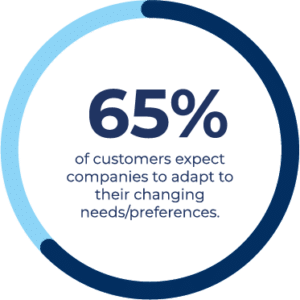
Under certain circumstances, consumers have especially high expectations for personalization. For example, 73% expect better personalization as technology advances. And 74% of consumers feel personalization should improve as they provide a brand with more data. 64% expect improved personalization as they spend more.
Yet, the majority (61%) say that most companies they deal with treat them as a number, rather than a unique individual.
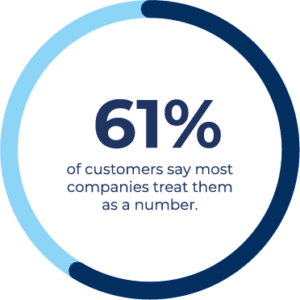
Shoppers’ favorite brands are performing slightly better in terms of personalization. 56% of consumers say they favorite brands adapt to their changing needs always or often. In comparison, 46% of shoppers say most brands do so. However, there’s still plenty of room for improvement – even for the most beloved brands.
It’s critical to provide customers with personalized experiences throughout the purchase journey. A single source of truth for each customer is key.
All data and interactions should live in a central location – ideally, Salesforce. That includes not only purchase history, but also conversations via all channels and ratings and reviews – among other touchpoints.
This data provides brands with a 360 degree of each customer’s needs and preferences. Then, the data can be used to fuel personalized experiences throughout the purchase journey – regardless of where the customer is on the journey and what channel they’re using to interact.
Strategic, Responsible AI is Key to Scaling Outstanding Omni-Channel Experiences
Customer expectations have never been higher. But often, company resources and headcounts are stretched thin. So, how can brands possibly be expected to meet these lofty expectations?
The most successful brands are tapping into artificial intelligence (AI) to deliver winning omni-channel experiences at scale. During Dreamforce, we heard from several companies – including AmeriHealth – that are tapping into AI to revolutionize the way they deliver service.
As it turns out, a lot of consumers are open to this approach. Per Salesforce, 56% of consumers are open to the use of AI to improve their experiences. And 53% feel generative AI will help companies better serve their customers.
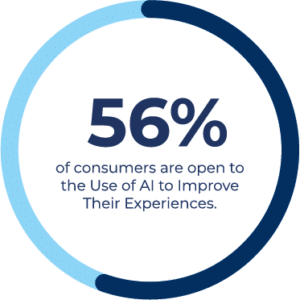
For example, brands can now easily build and deploy chatbots that can instantly engage with customers via their favorite channels – including messaging apps like WhatsApp and social media. That means customers no longer have to wait until business hours to get a response.
By and large, consumers welcome the opportunity to access self-service help. 72% have used self service portals, and 55% have used self-service chatbots.
Of course, not all chatbots are created equally. And it’s important to be thoughtful when building and deploying yours. After all, 68% of consumers wouldn’t use a company’s chatbot again after having a negative experience with it.
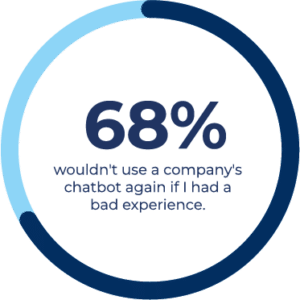
AI can also be a powerful tool for your live customer care teams. For example, live agents can leverage generative AI to get suggestions for how to respond to customer messages. That way, they don’t have to spend time starting from scratch each time.
AI holds tremendous potential. But understandably, many consumers have concerns about the implications of AI. For example, 75% feel generative AI may introduce new security risks. And 74% are concerned about the unethical use of AI.
So it’s not surprising that trust and security were a common theme of this year’s Dreamforce sessions.
Transparency is key to earning and maintaining consumers’ trust. For example, 89% of consumers say it’s important to know when they’re communicating with AI – and when they’re communicating with a human. It’s important to make this crystal clear.
Also, be sure to communicate how you’re addressing concerns with ethics, safety, and bias (among other things). These efforts will go a long way in preserving trust.
The Human Touch Remains Essential
Even in the age of AI, consumers still place tremendous value on human interaction.
Salesforce found that 80% of consumers say it’s important for a human to validate the output of AI. And 77% expect to interact with someone immediately when they contact a company.
Your people are one of your biggest assets. When they have the right tools and information, they can deliver great experiences throughout the purchase journey.
For example, a customer care team member can step in to help with a complex, post-purchase customer inquiry, which restores the customer’s trust. Or, an in-store employee can engage with a shopper via their favorite messaging app (such as WhatsApp) to provide personalized advice and recommendations. Or perhaps a customer care team member surprises and delights a customer by responding to their positive review of a recent purchase.
These human-driven experiences are a powerful way to set your brand apart. Consider the fact that nearly half (47%) of consumers are willing to pay more for better customer service!
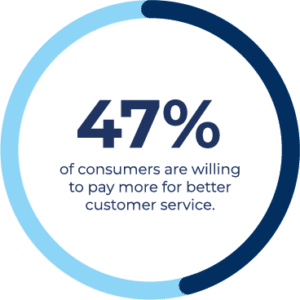
Start Delivering Outstanding Omni-Channel Experiences
Modern consumers are interacting with brands via numerous channels, including message apps like WhatsApp and social media channels. They expect seamless, personalized experiences – regardless of channel.
It’s essential to deliver connected experiences throughout the purchase journey. 1440 can help.
Ready to see how 1440’s suite of solutions empower some of the best bands to streamline customer engagement across the purchase journey? Contact us today to see firsthand.